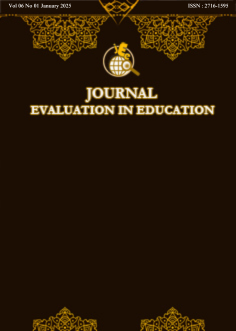Evaluation of STEM Integration in Science Teaching Materials: An Independent Curriculum Perspective
Abstract
Purpose of the study: This study aims to evaluate the level of integration of STEM components in the science teaching materials of the Independent Curriculum. The focus of the evaluation includes the dimension of integration between STEM disciplines as well as the relevance of the learning context to real-world problem solving.
Methodology: The research uses a qualitative descriptive method, analyzing 31 science learning modules using the Bybee STEM evaluation model. Data were collected through document analysis with a focus on the variables of coordination, combination, and linkage of STEM disciplines.
Main Findings: The results show that science is dominant as the main context (100%) with the integration rate of technology and mathematics at 77% and 61%. However, the engineering aspect is only integrated by 23%, indicating a lack of attention to engineering design.
Novelty/Originality of this study: This research provides new insights into the challenges of STEM implementation in Indonesia, especially in the context of developing balanced and comprehensive science teaching materials.
References
A. Permanasari, B. Rubini, and O. F. Nugroho, “STEM education in Indonesia: Science Teachersâ€TM and Studentsâ€TM Perspectives,” J. Innov. Educ. Cult. Res., vol. 2, no. 1, pp. 7–16, 2021, doi: 10.46843/jiecr.v2i1.24.
E. A. Ring, E. A. Dare, E. A. Crotty, and G. H. Roehrig, “The evolution of teacher conceptions of STEM education throughout an intensive professional development experience,” J. Sci. Teacher Educ., vol. 28, no. 5, pp. 444–467, 2017, doi: 10.1080/1046560X.2017.1356671.
D. Ardianto, T. Windiyani, I. R. Suwarma, K. Karmilasari, and N. Nurul, “Analysis of physics learning in elementary schools and the need for professional development: Is STEM education training necessary for elementary school teachers?,” Momentum Phys. Educ. J., vol. 8, no. 1, pp. 84–94, 2024, doi: 10.21067/mpej.v8i1.9105.
B. Rubini, D. Ardianto, I. D. Pursitasari, and I. Permana, “Professional development model for science teachers based on scientific literacy,” IOP Conf. Ser. Mater. Sci. Eng., vol. 166, p. 012037, 2017, doi: 10.1088/1757-899X/166/1/012037.
E. White and A. Shakibnia, “State of STEM: Defining the landscape to determine high-impact pathways for the future workforce,” Proc. Interdiscip. STEM Teach. Learn. Conf., vol. 3, no. 1, Jan. 2019, doi: 10.20429/stem.2019.030104.
D. Yabaş and T. Abanoz, “Integrated STEM Teaching: Innovative STEM training for preschool and primary school teachers,” J. Educ. Futur., no. 26, pp. 27–40, 2024, doi: 10.30786/jef.1404946.
M. Ummah and N. Shofiyah, “Uncovering integrated STEM attitudes and dimensional correlations in education,” Indones. J. Educ. Methods Dev., vol. 19, no. 2, 2024, doi: 10.21070/ijemd.v19i2.819.
OECD, “Pisa 2025 Science Framework,” 2023, pp. 1–93, 2023.
T. R. Kelley and J. G. Knowles, “A conceptual framework for integrated STEM education,” Int. J. STEM Educ., vol. 3, no. 1, p. 11, 2016, doi: 10.1186/s40594-016-0046-z.
J. W. Creswell, Research design: Qualitative, quantitative, and mixed methods approaches. Sage publications, 2014.
R. W. Bybee, “The case for education: STEM challenges and opportunities,” NSTA (National Sci. Teach. Assocation), pp. 33–40, 2013.
S. KHUT and K. Shimizu, “Integrating STEM Approach in K-12 science education teaching practice: A systematic literature review,” Int. J. Res. STEM Educ., vol. 5, no. 2, pp. 1–18, 2023, doi: 10.33830/ijrse.v5i2.1598.
V. R. Jones and T. Roberts, “STEM literacy in technology education,” 2024, pp. 73–84. doi: 10.1007/978-981-97-1995-2_6.
D. Sarıtaş, H. Özcan, and A. Adúriz-Bravo, “On the practice of integrated STEM education as ‘poiesis’,” STEM Educ. Rev., vol. 1, 2023, doi: 10.54844/stemer.2023.0408.
Copyright (c) 2025 Dody Hermanto, Didit Ardianto, Anna Permanasari

This work is licensed under a Creative Commons Attribution 4.0 International License.
Authors who publish with this journal agree to the following terms:
- Authors retain copyright and acknowledge that the Integrated Science Education Journal is the first publisher licensed under a Creative Commons Attribution 4.0 International License.
- Authors are able to enter into separate, additional contractual arrangements for the non-exclusive distribution of the journal's published version of the work (e.g., post it to an institutional repository or publish it in a book), with an acknowledgment of its initial publication in this journal.
- Authors are permitted and encouraged to post their work online (e.g., in institutional repositories or on their website) prior to and during the submission process, as it can lead to productive exchanges and earlier and greater citation of published work.









.png)
.png)





